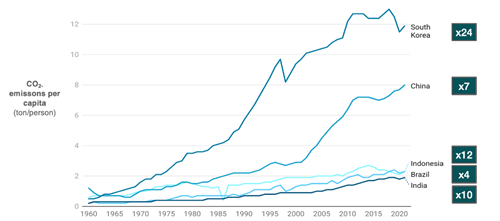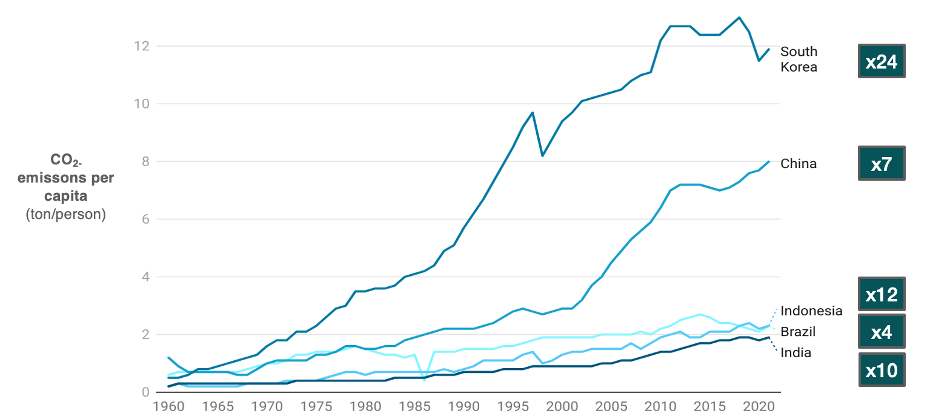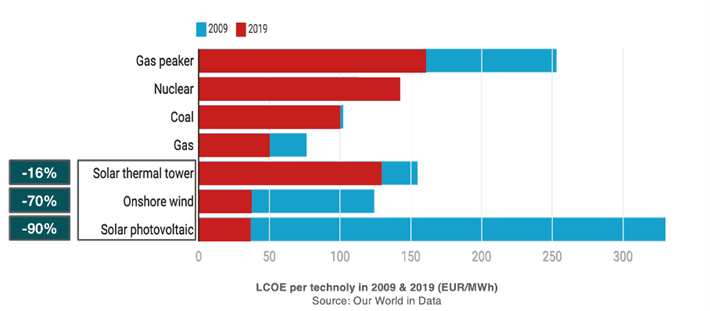Why the green transition train is one nobody wants to miss
Countries worldwide are actively reducing their emissions to combat climate change. This involves changes in policies and laws regarding sustainability across various sectors, requiring additional efforts and, inevitably, extra funding to meet new standards. This situation raises a natural question: Should developing countries be held to the same environmental standards? It's no secret that the exploitation of fossil fuels significantly contributed to the wealth of developed nations. Therefore, why shouldn't developing countries be permitted to utilize their fossil fuel resources for economic growth before joining the green transition as more developed economies?
From a climate perspective, global restrictions on activities that exacerbate global warming are essential. However, when viewed through an economic lens, the situation presents a more nuanced picture.


Figure: Emissions per capita from 1960 to 2021 (Source: Our World in Data)
It is often observed that in developing economies, per capita CO2 emissions tend to rise sharply during the development phase due to factors such as changes in diets and infrastructure construction. This pattern was evident in several economies that experienced substantial growth since the 1960s, mirroring the trends seen in Western economies since the Industrial Revolution. Based on recent history, it is reasonable to expect that developing countries will similarly emit more CO2 as they develop. Consequently, restricting emissions could be seen as a constraint on their economic development potential.
However, there is a significant caveat to this extrapolative reasoning. The green transition has spurred substantial advancements in renewable technologies. Currently, the cost of green energy is lower than that of fossil fuels. Unlike in the 1960s, when cheap green alternatives were unavailable, today's landscape offers economically viable renewable energy options.

Figure: LCOE per technology; 2009 vs 2019 (Source: Our World in Data)
This implies that increased energy production, necessitated by development, can and should be pursued in an environmentally friendly manner, guided by economic principles. As developing countries work towards cost reductions in various sectors to enhance sustainability, green alternatives are poised to become the most economical choice. Consequently, the green transition and economic development can thus go hand in hand.
Another critical consideration is a country's economic positioning during the green transition. The economy of the future will be predominantly green. If developing countries delay embracing this transition, they risk perpetually lagging behind in emerging development trends. However, by proactively adopting green technologies, these countries have the opportunity to lead in certain sectors, potentially securing economic prosperity for decades. This dynamic is already observable in developed countries, where businesses that were slow to adopt green practices are now struggling against those that did. Catching up later can require immense effort and resources.
The global green transition represents not just a response to climate change, but also a significant opportunity for economic prosperity. It should be a primary focus for every country. The role of developed nations is crucial in this regard: by continuing to advance green technologies, they can ensure that developing countries do not face a dichotomous choice between embracing the green transition and fostering their own growth. With these elements aligned, the green transition is a train nobody wants to miss.